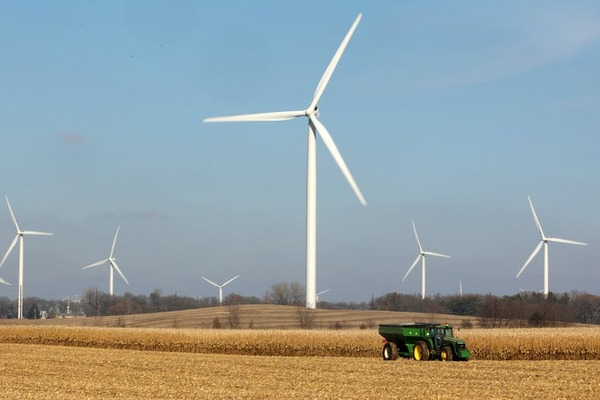Energy is at the heart of development. Energy makes possible the investments, promoting innovations and new industries that offer jobs, inclusive growth and shared prosperity for entire economies.
Today we primarily use fossil fuels to heat and power our homes and fuel our cars. It’s convenient to use coal, oil, and natural as we expect. In a different view, we are facing fossil fuel exhaustion and its negative environmental impacts.
At that time, the global energy landscape is witnessing a major transformation. Renewable energy is playing an increasingly vital role in helping countries develop modern, secure energy systems.
Solar home systems are increasing in efficiency as they decrease in cost – making them affordable in developing countries, especially Africa, which are regions that account for the most significant gaps in energy access.
What is renewable energy?
Renewable energy is the energy that is collected from renewable resources, which are naturally replenished on a human timescale, such as sunlight, wind, rain, tides, waves, and geothermal heat. Renewable resources are virtually inexhaustible in duration but limited in the amount of energy that is available per unit of time.
Types of Renewable Energy sources
Hydropower: For centuries, people have taken advantage of the energy of river flow, using dams to control water flow. The leading hydropower producers China, Brazil, Canada, the U.S., and Russia prove that Hydropower is the world’s biggest source of renewable energy by far. While hydropower is theoretically a clean energy source, but it also has several drawbacks.

Large dams can disrupt river ecosystems and surrounding communities, harming wildlife and arable land loss resulting in residents relocation. Hydropower faces its own emissions problems due to decaying organic material in reservoirs releases methane. Dams generate silt buildup over time, which can compromise capacity and harm equipment.
Along with Hydropower, tidal and wave energy projects around the world are developing. Marine energy projects currently generate an insignificant amount of power of all renewables—but the potential is far greater. Many programs and countries’ budgets have encouraged innovation in this area.
Wind: Like harnessing the power of water flow, people use the wind as a source of energy more than 7,000 years ago. Now, electricity-generating wind turbines are creating potential renewable energy around the globe. China, the U.S., and Germany are the leading wind energy producers.

While most wind power comes from onshore turbines, offshore projects are appearing too. The first Offshore wind farms are opened and gaining momentum.
However, another problem with wind turbines is that they’re a danger for wild birds and bats, killing hundreds of thousands annually. Engineers have worked on solutions to make them safer for flying wildlife. Some people may be opposed to the turbine system affecting their lives because of the noise and the way it appears but cannot negate its significant benefits to global energy.
Solar: Solar power is energy from the sun that is converted into thermal or electrical energy. Solar energy is the cleanest and most abundant renewable energy source available. It is reshaping energy markets around the world. We are becoming more and more familiar with solar panels. They are easily noticeable from home rooftops to utility-scale farms.
Biomass: Biomass energy includes biofuels such as ethanol and biodiesel, wood and wood waste, biogas from landfills, and municipal solid waste. Biomass energy is a flexible energy source, able to fuel vehicles, heat buildings, and produce electricity. But biomass is not popular due to thorny issues when expanding.
Geothermal: Geothermal energy is derived from the Earth’s internal heat. It used for cooking and heating for thousands of years in some countries. On a large scale, underground hot water can be tapped through wells to generate electricity. On a smaller scale, people use temperature differences several feet below ground for heating and cooling. Unlike solar and wind energy, geothermal energy is always available and unlimited, but we have to control side effects smell that can accompany released hydrogen sulfide.

How Solar Panels Work
The energy that we receive from the sun per single hour is enough to power the Earth for a whole year. The global energy crisis can be solved if we could harness this incredible power. Have you ever wondered how exactly can this power be used in our homes? To help that works, it requires photovoltaic (PV) cells that are mounted on your solar panels.
The PV (or solar) cells are made as semiconductors. Silicon is the most commonly used semiconductor in PV cells in your solar panels.

The solar panel is set up in a location where maximum sunlight is likely to fall upon it like your roof. The more sunlight that hits the solar panels, the more energy is generated.
The semiconductor absorbs sunlight power that loosens the electrons in the layer of the semiconductor.
That leads to there are one or more electric fields present in the PV cells.
These fields force the free electrons to move in a certain direction, thus current is produced.
We can use this current by placing metal contacts on the top and the bottom of a PV cell. So for a given number of solar panels, we will have enough electricity to power the whole house.
The more efficient the panels are, the more power they can produce, and the fewer you will need on your roof to get the same energy output.
The Clean Energy Advantage for Eco-friendly life
We are facing diminishing sources of energy due to the exhaustion of fossil fuels. Many of the energy sources that we use today are not eco-friendly at all. In fact, many of the renewable energy sources that are in vogue today leave negative impacts on the environment.
Greener Choice
Solar power is the cleaner, greener choice. By installing solar panels, many residents are taking the right step towards a good chance to use an energy source that is not only unlimited and always available but is eco-friendly as well.
Reduce Carbon Emissions
Solar energy does not result in harmful carbon emissions unlike energy from coal-fired processes that increase global warming or atmospheric pollution. According to statistics, 1 kilowatt (KW) of solar energy prevents 300 pounds of carbon from entering the atmosphere.
Save Water
Instead of using a large amount of water for other energy production methods, solar power also saves water, natural resources that are getting scarcer by the day. Studies show that generating electricity using solar panels that can save almost 90 percent of water when you compare it with energy production from coal.
Slow Down Depletion of Natural Resources
The oil stock and coal of the world are being depleted. Statistics show that if we keep consuming this resource at the same pace, we are out of oil over the next four decades. Coal will be exhausted in about 140 years.
Switching to solar energy can help slow down this depletion so that these resources are available for use in longer terms and for critical needs.
Studies have also shown that solar energy is a healthy option for humans because it represents far less toxicity than other power production processes that are in use currently.
Improve Air Quality
Burning fossil fuels (natural fuels like coal, gas, etc.) for thermal power results in water, air and also land pollution. This impacts not just humans but all living species.
For instance, mercury pollution caused by coal firing is responsible for high levels of mercury in fish, making them dangerous for consumption.
Switching to solar power prevents all pollution from energy production processes and allows every living being on the planet to lead a healthier life.
Our energy demand is increasing sharply for a higher living level. Researchers predict that by the 2030- 2040 decade, the energy consumption will double the consumption of a hundred trillion kilowatt-hours per year at the present.
At the same time, Scientists are indicating that our carbon-dioxide emissions are at record highs, spelling disaster for the environment. Action needs to be taken now and going solar is the perfect solution that fulfills all these needs.
Conclusion
By installing solar panels, residents are placed ideally to make the best use of this natural, renewable energy source for an eco-friendly life. In addition, let’s enjoy the cost savings that you get from going solar, the satisfaction of doing what is environmentally right and being a responsible global citizen.
